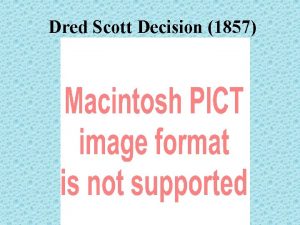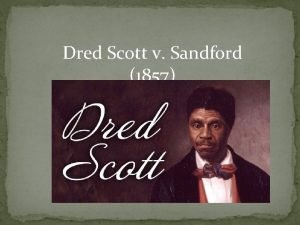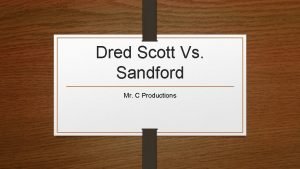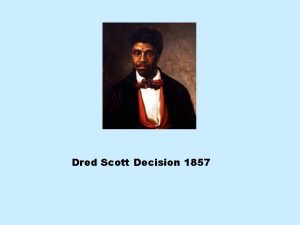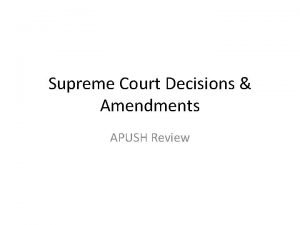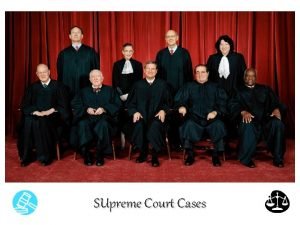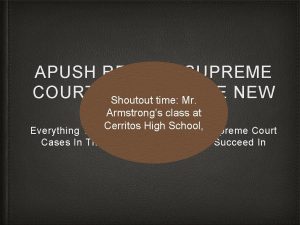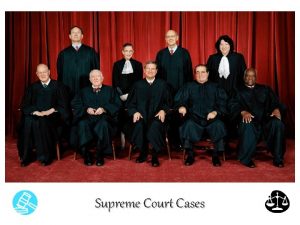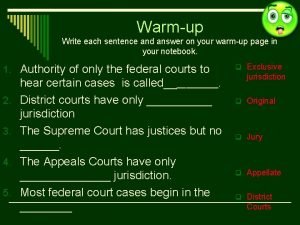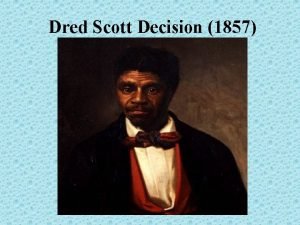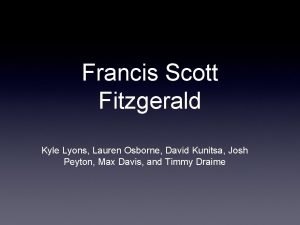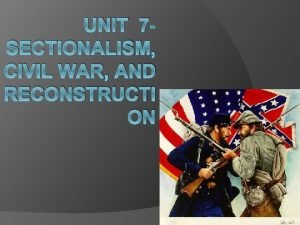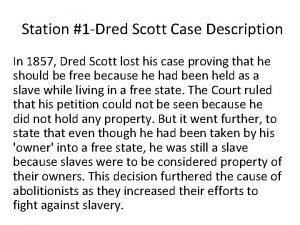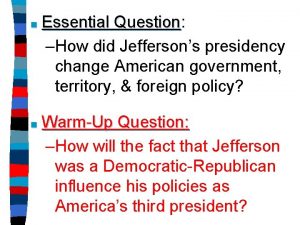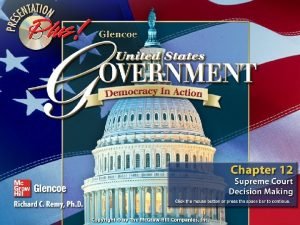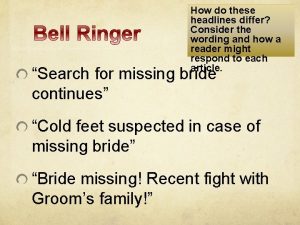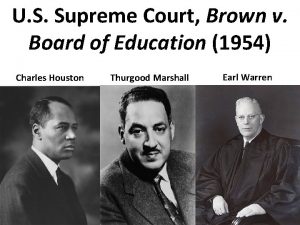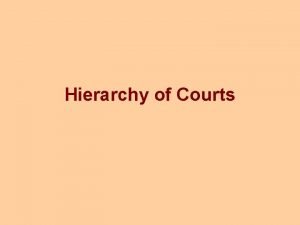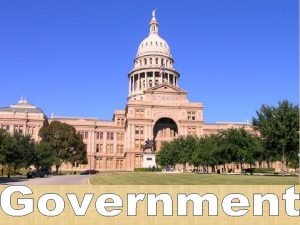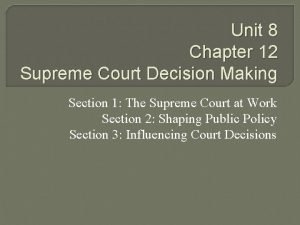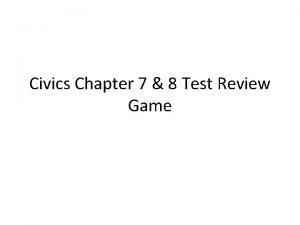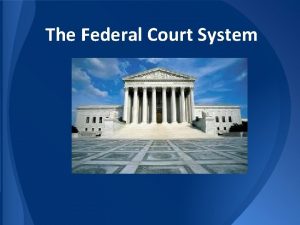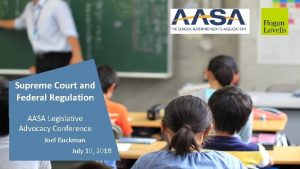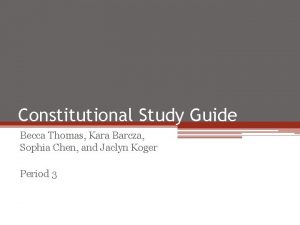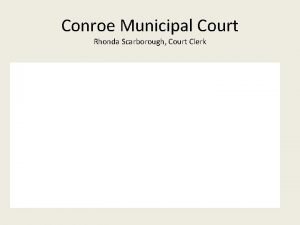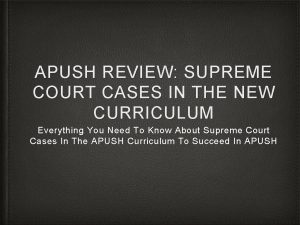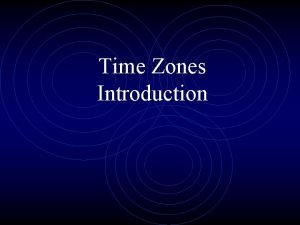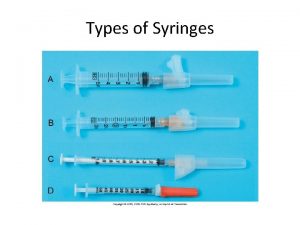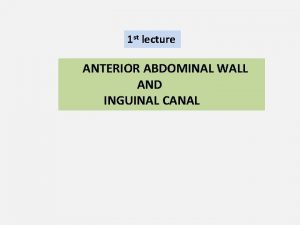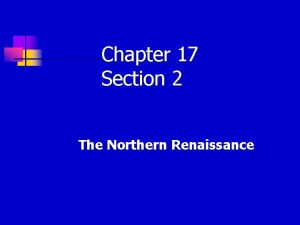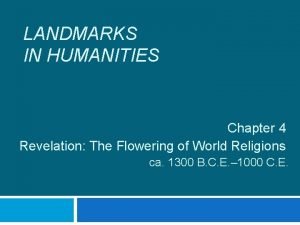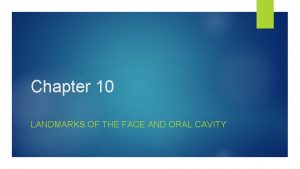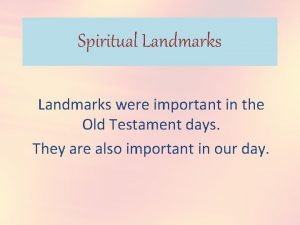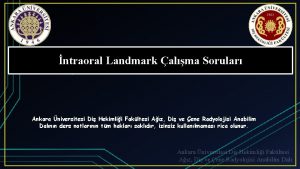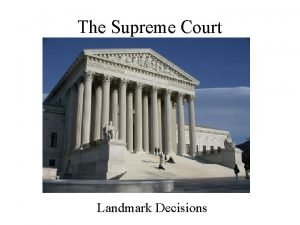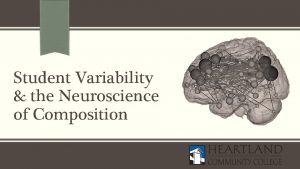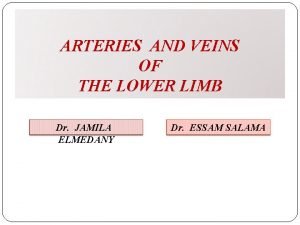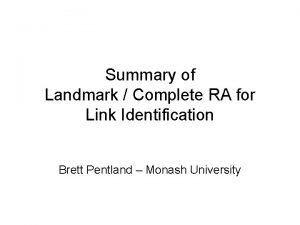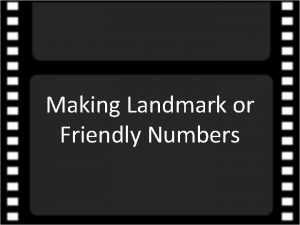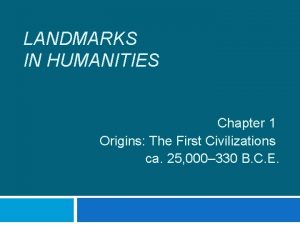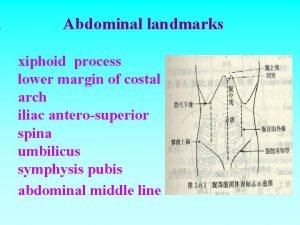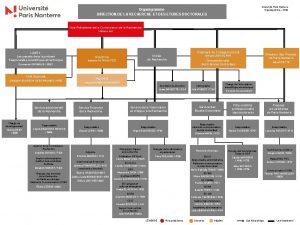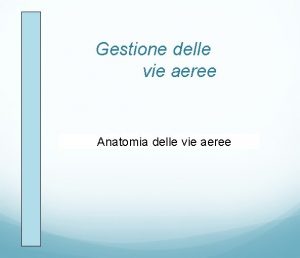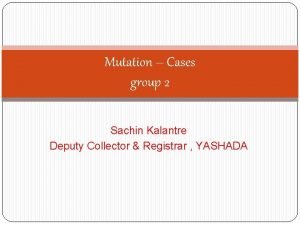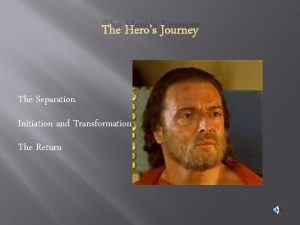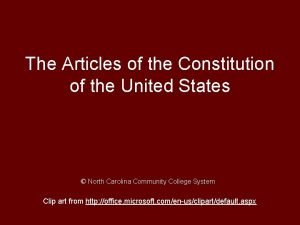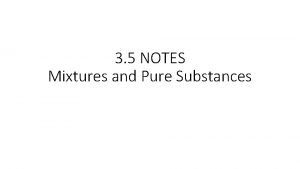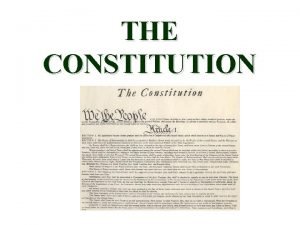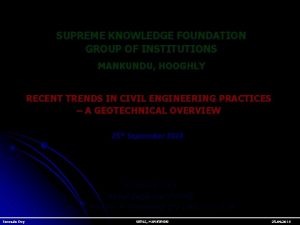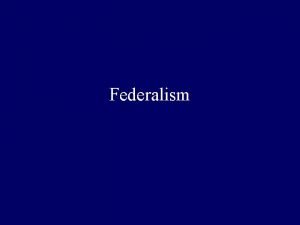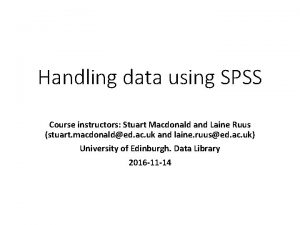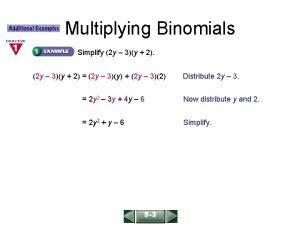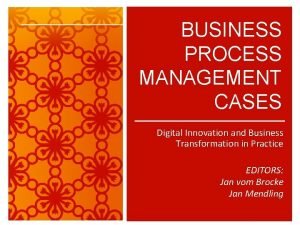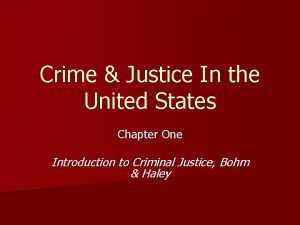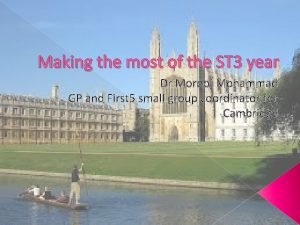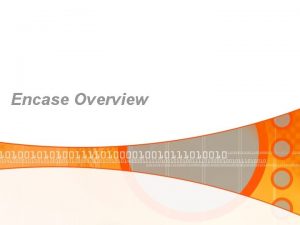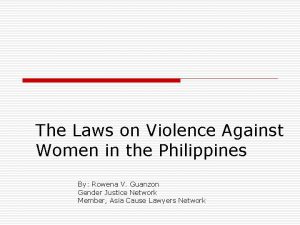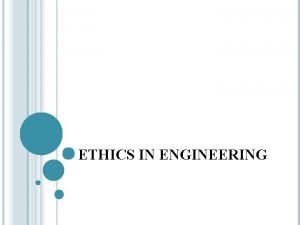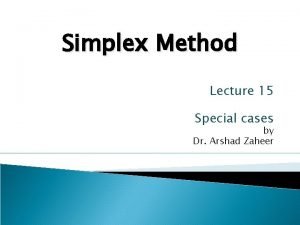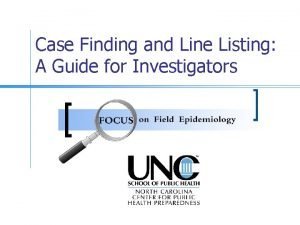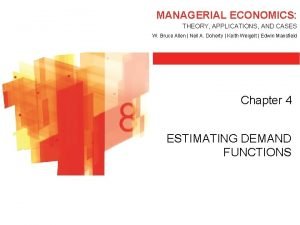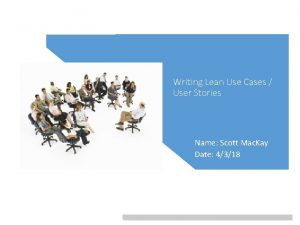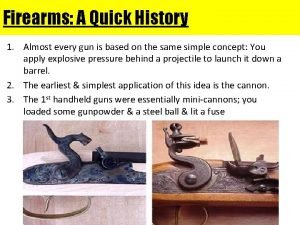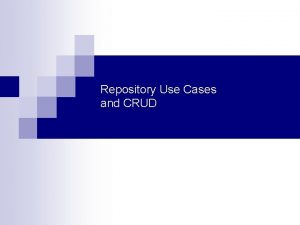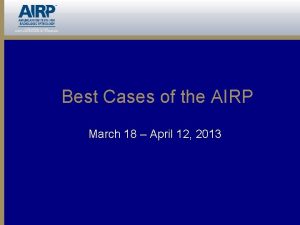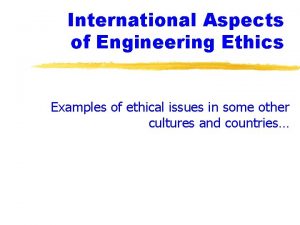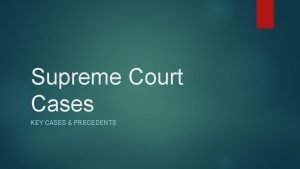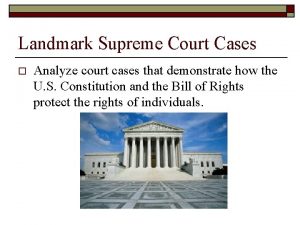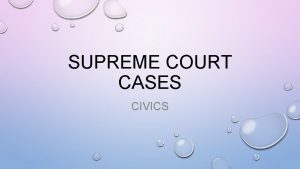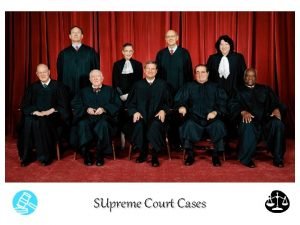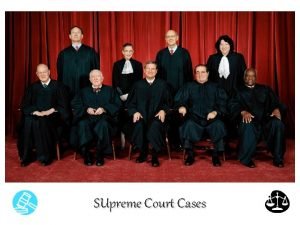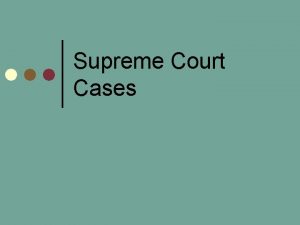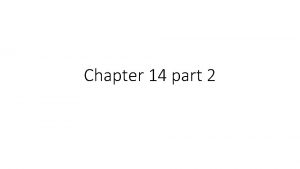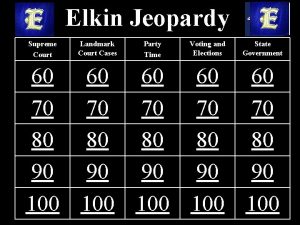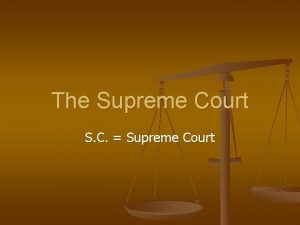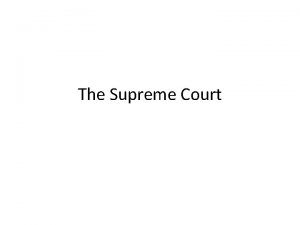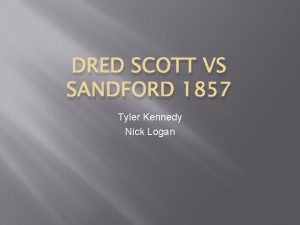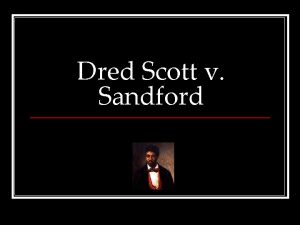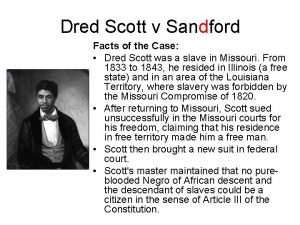Landmark Supreme Court Cases Dred Scott v Sandford



































































































- Slides: 99

Landmark Supreme Court Cases

Dred Scott v. Sandford

Slave Life § Dred Scott was born as a slave in Virginia in 1795, and sold to his owner, Peter Blow, a Missouri plantation owner § After Peter Blow’s death in 1832, Scott was transferred to the ownership of Dr. John Emerson, an army surgeon § Emerson brought Scott back with him to the free State of Illinois


Slave Life Cont… § In 1836, after two years in Illinois, Scott was brought with Dr. Emerson to a fort in Wisconsin, also a free territory § Scott never made a claim to freedom in these free states, either unaware of his rights or happy with his situation there § After Scott was brought back to Missouri, Emerson died in 1843, leaving Scott to be hired by Emerson’s widow to an army captain

Suing for Freedom § No longer content with his situation, he offered to buy his freedom for 300 dollars, an offer refused § Scott believed that the years he spent in the free states of Wisconsin and Illinois made him a free man, seeing as this was often the way that things worked in the region § In 1847, Scott lost his court case due to the fact that he couldn’t prove he was actually owned by Emerson’s widow

Dred Scot V. Sanford § After losing his case in the United States Circuit Court of Missouri in 1854, Scott sought to bring his case to the U. S. Supreme Court § Representing the Defence, was Mrs. Emerson’s brother John Sanford, from New York § Of the nine Supreme court Justices of 1854, 7 had been appointed by pro-slavery presidents and 5 were from families owning slaves

Dred Scott V. Sanford § A previous decision had given States the sole right to determine the status of their inhabitants § What the case broke down to was: whether The Court had the ability to argue the case (considering the powers of the states), and whether Scott was actually a citizen

Outcome and Impact § In 1857, The United States Supreme Court ruled that no slave or descendent of a slave could ever be, or ever was a citizen § Thus, Scott had no right to sue in federal court § Additionally, the Missouri compromise (restricting slavery in certain territory) of 1820 was ruled unconstitutional

Outcome and Impact § The decision pleased many southerners, but infuriated the North § The case was a major reason for the Election of anti-slavery candidate Abraham Lincoln, and the following secession of the southern states § The case had a profound impact on America, and is commonly know as one of the most infamous cases in Supreme Court History

Tinker v. Des Moines Independent Community School District Student Speech Symbolic Speech 1969

Turbulent Times Country was embroiled in conflict regarding the Vietnam War. This conflict was not approved by Congress but from a police action that escalated over time. Many did not want to fight in this conflict with unclear war aims, and as a result, many tried to dodge the draft. The country was divided on this war and many youth actively protested.


Facts of the Case In 1965, John and Mary Beth Tinker attended public school in Des Moines, Iowa.

Tinker’s were part of group protesting the Vietnam War To publicize their opposition to the Vietnam War, they wore black armbands to school. Principals in the school district, created a rule that any student wearing an armband to school would be suspended unless the armband was removed. What do you think the Tinkers (and a friend- Chris Eckhardt) did?


Tinkers finally returned to school Their fathers filed a suit in the U. S. District Court Asked for damages and an injunction to stop school officials from continuing the armband policy. District Court Decision: School officials policy was reasonable. What were the school officials hoping to avoid? Tinkers appealed the case to the US Court of Appealsthis ended in a tie vote. So, which decision was enforced? Next Step

What types of symbolic speech is Protected? Does it matter that the speech was in a school? It is not clear to what extent “hate” speech is protected. What types of expressive acts are considered “speech”? Does what is going on the country at the time matter (Vietnam War) Did the armbands cause a serious disturbance at the school? Were all political symbols banned? (Iron Cross – Nazi symbol was allowed. )

7 -2 Decision in favor of the Tinkers Majority Opinion Students keep their constitutional right of freedom of speech while in public School officials must provide constitutionally valid reasons for regulating student expression School officials must show: “material and substantial disruption” with the discipline and education of students Wearing armbands was a “silent, passive expression of opinion” Students do not “shed their constitutional rights to freedom of speech or expression at the schoolhouse gate. ” Dissenting (minority) Opinion “myth to say that any person has a constitutional right to say, what he pleases, where he pleases and when he pleases. ” Armbands were a distraction taking students minds off their school work Ruling too restrictive on school officialslimiting control over their schools There must be recognition of authority of schools and school officials.

United States v. Nixon A CASE STUDY

The Case

June 17, 1972 Watergate Break-in Five men were arrested inside the Democratic National Committee’s offices in the Watergate complex in Washington, D. C. at 2: 30 am. They were trying to bug the offices. Former Attorney General John Mitchell, head of the Nixon reelection campaign denies any link to the breakin. Image from http: //wwwimage. cbsnews. com/images/2005/02/15/image 674276 x. jpg

The Tapes Former presidential appointments secretary, reveals in congressional testimony that since 1971 Nixon had recorded all conversations and telephone calls in his offices. President Nixon refused to release the tapes to Congress or the Special Prosecutor. Image from http: //www. pimall. com/nais/pivintage/images/ovalofficerecorder. jpg He claimed they were protected under “executive privilege”.

The Release of the Tapes Nixon finally released some of the tapes, but portions of them were blank.

Transcripts • April 30, 1974: The White House releases more than 1, 200 pages of edited transcripts of the Nixon tapes to the House Judiciary Committee, but the committee insists that the full tapes themselves must be turned over.

Historical Examples Outside the Court George Washington refused to turn over to the House certain documents related to treaty negotiations between US and Great Britain. President Eisenhower in a stand-off with Senator Joseph Mc. Carthy wrote that the President could refuse to turn over any document he felt was privileged or confidential. Coined the term Executive Privilege.

The US Supreme Court

Two Arguments United States Executive privilege is not an absolute power. Executive privilege cannot be used to deny the Court’s access to evidence. The President should not be able to be the final arbiter of what the Constitution means. This does not involve confidential national security interests. President Nixon The US Constitution allows the President the power of executive privilege. The power to withhold information is the President’s absolute power. The President must have this power to maintain national security interests. The dispute should be resolved in the executive branch.

Unanimous Decision, 8 -0 Burger Douglas Brennan Stewart White Marshall Blackmun Powell

The Decision Nixon had to release the tapes (there was no executive privilege) The Court has jurisdiction in this case Executive privilege conflicts with the constitutional obligation of the judicial branch and the functions of the court In order to ensure due process, all “relevant and admissible evidence” must be produced Image from http: //www. minnpost. com/_asset/nkwrw 0/mp_main_half/Warren. Burger 212. jpg

Significance The RULE OF LAW United States v Nixon reinforced the rule of law establishing that no one, even the President of the United States, is above the law. Concept that citizens are governed by the law and institutions, not individuals. The law supersedes all else an dis intended to be constant, predictable, and just.

Resignation • July 27, 1974: House Judiciary Committee passes the first of three articles of impeachment, charging obstruction of justice. • August 8, 1974: Richard Nixon becomes the first U. S. president to resign. Vice President Gerald R. Ford assumes the country’s highest office.

Marbury v. Madison

Marbury v. Madison A. Jefferson (Republican) defeats Adams (Federalist) in the Election of 1800

Marbury v. Madison 1. On his last day, Adams fills courts with as many Federalist judges as possible They were called “midnight judges” - Adams waited until 9 o’clock on his last night as President to appoint them.

Marbury v. Madison 2. Jefferson becomes President the next day but some of Adams’ judges have not yet received their official forms a. Jefferson says they cannot be judges

Marbury v. Madison b. Jefferson orders James Madison (Secretary of State) not to give out the papers to the judges

Marbury v. Madison 3. William Marbury is one of the judges affected by Jefferson’s decision

Marbury v. Madison a. Marbury demands that the Supreme Court examine the case and force the executive branch to hand out papers

Marbury v. Madison Marbury says Judiciary Act of 1789 gives the Supreme Court the right to do this What was Judiciary Act of 1789? Created federal court system with 3 levels and outlined the powers of each – district, court of appeals, Supreme Court

Marbury v. Madison 4. John Marshall, the chief justice and a Federalist, listens to Marbury’s case How do you think Jefferson reacted? How do you think Marshall reacted?

Marbury v. Madison a. Marshall agrees that Marbury had been treated unfairly AND…. .

Marbury v. Madison b. Judiciary Act would allow SC to force Madison into making Marbury a judge BUT….

Marbury v. Madison c. Marshall has to decide is this constitutional or unconstitutional?

Marbury v. Madison - Marshall decides that forcing the government to make Marbury judge would be unconstitutional

Marbury v. Madison 5. Marshall’s ruling establishes Judicial Review - Supreme Court can declare act of Congress unconstitutional

Marbury v. Madison • Judicial review has increased the Supreme Court’s legal authority… making it a much stronger branch

Bush Vs. Gore 2000.

Election of 2000 Democrat – Al Gore Republican – George W. Bush

Election of 2000 Both needed Florida’s 25 electoral votes to win

Election of 2000

Election of 2000 Close results in Florida State law required a recount

Constitutional issues Found that a manual recount of disputed presidential ballots in Florida lacked a uniform standard of judging a voter’s intent.

Majority opinion A 7 -2 majority ruled that the Florida recount was being conducted unconstitutionally.

Significance Halted recount in Florida Made George W. Bush the winner of the election. Bush won by 537 votes in Florida.

Hazelwood v. Kuhlmeier A First Amendment Case © Constitutional Rights Foundation, Los Angeles, 2002 All rights reserved.

This case began at Hazelwood East High School and ended up in the U. S. Supreme Court. Here are the basic facts of the case. . . The school newspaper was written and edited by the Journalism II class at Hazelwood East High School.

Three students in the class worked on a special feature section for the upcoming edition. Instead of just covering dances and school sports, they wanted to do stories about real problems students at their school dealt with. New interesting relevant same old They handed in articles on different topics, including teen pregnancy and students with divorced parents. They interviewed and wrote about students’ experiences. They did not use the students’ real names.

When the school newspaper was ready to go to press, the journalism teacher reviewed it and, as always, gave it to the principal for final review. The principal directed the newspaper advisor to delete the two pages containing all the feature stories about teen problems. The principal did not think it was appropriate to run detailed stories about pregnant students. The stories would be read by the whole community, including younger brothers and sisters of students.

He was also worried that even though the names had been changed, people would be able to identify the students interviewed. He thought that the divorce story was one-sided and did not demonstrate responsible journalism. Though the principal only objected to the teen pregnancy and divorce stories, he did not think there was time to reformat the paper, so the whole feature section was cut.

The three students believed that their constitutional rights under the 1 st Amendment had been violated. They took the school district to court. The case first went to the federal district court where the court ruled in favor of Hazelwood (the students lost). Winner Hazelwood - School District Kuhlmeier, Smart, Tippett - Students The attorneys for the students appealed, and the case went to the U. S. Court of Appeals, where the students won. Winner Hazelwood - School District Kuhlmeier, Smart, Tippett - Students

Both sides presented oral arguments and briefs to the appeals courts. Attorneys for the Hazelwood District presented this argument: The newspaper was part of the school curriculum, and the principal and school board are allowed and expected to control curriculum. It is up to the teacher, principal, and school board to decide whether students’ articles run in the newspaper. Articles can be censored for reasonable academic concerns. The principal acted reasonably.

Attorneys for Kuhlmeier (the students) presented this argument: According to school policy, student publications will not restrict free expression…within the rules of responsible journalism and only speech that interferes with the educational environment or invades the rights of others can be prohibited. The students had a constitutional right to express themselves in the paper. The principal’s censorship was unreasonable.

Hazelwood school district appealed the case and it went to the U. S. Supreme Court. The Supreme Court had to decide these questions: Can school authorities control the free expression of ideas in the school newspaper? Was the principal’s censorship reasonable?

The Decision of the U. S. Supreme Court in Hazelwood v. Kuhlmeier (1988) As the attorneys argued the case, an important question came up. . . Is Hazelwood East High School’s newspaper a “Public Forum”? Public Forum: Streets, parks, or any public facilities which have traditionally been used for the exercise of democracy, including purposes of assembly, communicating thoughts, and discussing public questions. The 1 st Amendment protects free speech in public forums. This issue became important in the Supreme Court’s decision.

The court found in favor of Hazelwood. Writing the opinion of the court, Justice Byron White said: Forums for public expression are places like streets and parks…used by citizens for purposes of assembly and discussing public questions. School facilities only become public forums if the school authorities have opened those facilities for indiscriminate use by the public. Hazelwood never opened up the student newspaper for such indiscriminate use. The production of the

The decision also says that. . . First Amendment rights of students in schools are not exactly like the rights of adults in other settings. A school need not tolerate student speech that is inconsistent with its basic educational mission, even though the government could not censor similar speech outside the school. Educators do not offend the 1 st Amendment by editing or controlling the style and content of student speech in schoolsponsored activities (newspapers, plays), so long as their actions are related to educational concerns.

In re Gault

Rights of Juveniles and In Re Gault Who: Gerald Gault, age 15 What: � Accused of making an obscene phone call to his neighbor. � Gault said that his friend made the phone call. � Police placed Gault in detention without probable cause. � One week later a judge sentenced Gault to the State Industrial School until Gualt turned 21 years old. � No lawyer or guardian were present at the trial.

Rights of Juveniles and In Re Gault Supreme Court decision: � Juvenile Courts must respect the due process rights of juveniles during their proceedings. � Youth have the following rights under the law: The right to receive notice of charges The right to obtain legal counsel The right to "confrontation and cross-examination" The "privilege against self-incrimination" The right to receive a "transcript of the proceedings, " and The right to "appellate review"

Plessy v. Ferguson Supreme Court Case 1896 “Separate But Equal” Power point created by Robert L. Martinez Primary Content: The Americans

In 1892, Homer Plessy took a seat in the “whites only” car of a train and refused to move. He was arrested, and convicted for breaking Louisiana’s segregation law.

Plessy appealed, claiming that he had been denied equal protection under the law. The Supreme Court handed down its decision on May 18, 1896. Homer Plessy

The Supreme Court ruled that separatebut-equal facilities for blacks and whites did not violate the Constitution. Miami, Florida

Plessy claimed that segregation violated his right to equal protection under the law. Homer Plessy

Supreme Court Justice Henry B. Brown ruled, “the object of the 14 th amendment … could not have been intended to abolish distinctions based upon color… or a commingling of the two races. ”

Justice John Marshall Harlan dissented from the majority opinion, “In respect of civil rights, all citizens are equal before the law…the seeds of race hate…planted under the sanction of law…the thin disguise of ‘equal’ accommodations…will not mislead anyone, nor atone for the wrong this day done. ”

In the decades following the Civil War, Southern states passed laws that aimed to limit civil rights for African Americans.

The Black codes of the 1860 s, and later Jim Crow laws, were intended to deny African Americans of their newly won political and social rights granted during Reconstruction.

Plessy was one of several Supreme Court cases brought by African Americans to protect their rights against discrimination.

In these cases, the Supreme Court regularly ignored the 14 th Amendment and upheld state laws that denied blacks their rights.

Plessy was the most important of these cases because the Supreme Court used it to establish the separate -but-equal doctrine.

As a result, city and state governments across the South, and in some other states, maintained their segregation laws for more than half of the 20 th century.

These laws limited African Americans’ access to most public facilities, including restaurants, schools, and hospitals.

Signs reading “Colored Only” and “Whites Only” served as constant reminders that facilities in segregated societies were separate but not equal.

It took many decades to abolish legal segregation. During the first half of the 20 th century, the National Association for the Advancement of Colored People (NAACP) led the legal fight to overturn Plessy.

was not until 1954 in Brown v. Board of Education that the Supreme Court overturned any part of Plessy. It

Brown v. Board of Education U. S. Supreme Court (1954)

Background In Topeka, Kansas, a black 3 rd grader named Linda Brown had to walk one mile through a Railroad switchyard to get to her elementary school. There was a white elementary school only 7 blocks away. She was turned down for enrollment in the white school. Brown’s father went to Mc. Kinley Burnett, head of Topeka’s branch of the NAACP. (National Association of the Advancement of Colored People). He agreed to help, he felt that they had the “right plaintiff at the right time”.

Segregation in Schools, 1954

How were schools different? Textbooks – White Schools received the new books – Black Schools received the books the white schools no longer needed (hand-me-downs); black students also had to share textbooks since there were more black students per class Teachers – White teachers received more pay than the black teachers. Buildings – White schools were in better shape than black schools

How were schools different? Moton High School, Appomattox, Virginia. All Black School Farmville High School, Appomattox, Virginia. All White School

Appeals Court Arguments The Board of Education’s defense was that segregation in the schools would prepare them for segregation in adulthood. They argued that segregated schools were not detrimental. They used examples such as Frederick Douglass, Booker T. Washington, and George Washington Carver. On one hand the Appeals Court judges agreed with the plaintiff, but on the other hand Plessy v. Ferguson set a legal a precedent.

Appeals Court Ruling? They ruled in favor of the Board of Education. The court cited the precedent of Plessy v. Ferguson as the main reason. The Plaintiffs Appealed to the U. S. Supreme Court.

Supreme Court

Arguments The NAACP lawyer who argued the case, Thurgood Marshall, is seen on the right. Main argument: That separate school systems for blacks and whites were inherently unequal, and thus violate the "equal protection clause" of the Fourteenth Amendment to the U. S. Constitution.

Ruling In a unanimous vote, 9 -0: "We conclude that in the field of public education the doctrine of ‘separate but equal’ has no place. Separate educational facilities are inherently unequal. . . "

Results American schools desegregated. Most did so peacefully, but other areas had major violence (especially in the south). Some states even dragged their feet. Integration wasn’t completed, totally, until 1970’s

Remember Thurgood Marshall? He argued a total of 32 cases in front of the Supreme Court. He won 29 of them. He became the first African-American Justice on the Supreme Court (1967).
 The dred scott decision timeline
The dred scott decision timeline Define dred scott v. sandford
Define dred scott v. sandford Dred scott vs sandford what happened
Dred scott vs sandford what happened Dred scott facts
Dred scott facts Apush supreme court cases
Apush supreme court cases Insular cases apush
Insular cases apush Schechter poultry v us apush
Schechter poultry v us apush Supreme court cases graphic organizer answers
Supreme court cases graphic organizer answers How cases reach the supreme court worksheet answers
How cases reach the supreme court worksheet answers Is there a basketball court above the supreme court
Is there a basketball court above the supreme court Dred scott decision what happened
Dred scott decision what happened Mollie fitzgerald wikipedia
Mollie fitzgerald wikipedia Quizlet
Quizlet The dred scott decision
The dred scott decision Dred scott case description
Dred scott case description John marshall supreme court
John marshall supreme court Supreme court does
Supreme court does What do these headlines say about how the supreme court
What do these headlines say about how the supreme court Supreme court
Supreme court Jurisdiction of high court
Jurisdiction of high court Have supreme court
Have supreme court Vocabulary activity 12 supreme court decision making
Vocabulary activity 12 supreme court decision making Which of these best summarizes the monroe doctrine?
Which of these best summarizes the monroe doctrine? The u.s. supreme court works chiefly as a(n)
The u.s. supreme court works chiefly as a(n) Indictable offence
Indictable offence Us circuit court map
Us circuit court map John marshall supreme court
John marshall supreme court Supreme court does
Supreme court does Supreme court
Supreme court Political parties
Political parties Criminal cases vs civil cases
Criminal cases vs civil cases 15th amendment importance
15th amendment importance Conroe municipal court
Conroe municipal court Court cases apush
Court cases apush Ian sandford
Ian sandford Solar time
Solar time Greater palatine nerve block landmark
Greater palatine nerve block landmark Landmark machu picchu
Landmark machu picchu Yokohama landmark tower earthquake proof
Yokohama landmark tower earthquake proof Landmark for vastus lateralis im injection
Landmark for vastus lateralis im injection Telerentgen
Telerentgen Internal inguinal ring
Internal inguinal ring Chapter 17 section 2 the northern renaissance
Chapter 17 section 2 the northern renaissance Edentulous anatomical landmarks
Edentulous anatomical landmarks What landmark legalized christianity
What landmark legalized christianity Landmarks of the face
Landmarks of the face Spiritual ancient landmark
Spiritual ancient landmark Linea obliqua
Linea obliqua Landmark
Landmark Cardiac landmarks
Cardiac landmarks Brain parts
Brain parts Great and small saphenous vein
Great and small saphenous vein Normal apical pulse rate
Normal apical pulse rate What is landmark
What is landmark Landmark option
Landmark option What are landmark numbers
What are landmark numbers Landmarks in humanities 5th edition chapter 1
Landmarks in humanities 5th edition chapter 1 How to wardrive
How to wardrive Abdominal contour
Abdominal contour Nasal instillation procedure ppt
Nasal instillation procedure ppt Dred nanterre
Dred nanterre Artistry krem pod oczy
Artistry krem pod oczy Veux-tu briser du péché le pouvoir lyrics
Veux-tu briser du péché le pouvoir lyrics Quelle est cette montagne
Quelle est cette montagne Lorsque le ciel retentit de louanges
Lorsque le ciel retentit de louanges Slidetodoc.com
Slidetodoc.com Yashada supreme
Yashada supreme Supreme power solutions
Supreme power solutions When does odysseus cross the threshold
When does odysseus cross the threshold Supreme law of the land clipart
Supreme law of the land clipart Supreme ordeal definition
Supreme ordeal definition Supreme marketing mix
Supreme marketing mix Is supreme pizza homogeneous or heterogeneous
Is supreme pizza homogeneous or heterogeneous Supreme law of the land clipart
Supreme law of the land clipart Supreme knowledge foundation
Supreme knowledge foundation Terry richardson obama
Terry richardson obama Constitution supreme law of the land
Constitution supreme law of the land Selenium ide commands
Selenium ide commands Norcross puppies pigs
Norcross puppies pigs Spss match cases on key variables
Spss match cases on key variables Practice 9-3 multiplying binomials
Practice 9-3 multiplying binomials Business process management cases
Business process management cases Percentage of criminal cases that go to trial
Percentage of criminal cases that go to trial Rcgp cot
Rcgp cot Focal length formula
Focal length formula Encase cases
Encase cases Vawc
Vawc Factoring special trinomials
Factoring special trinomials Examples of engineering ethics cases
Examples of engineering ethics cases Jama test cases
Jama test cases Famous bite mark cases
Famous bite mark cases Simplex method unbounded solution
Simplex method unbounded solution Azure data catalog example
Azure data catalog example Line listing of cases
Line listing of cases Managerial economics: theory, applications, and cases
Managerial economics: theory, applications, and cases Use case and user story
Use case and user story Types of breech face marks
Types of breech face marks Crud use case
Crud use case Airp best cases
Airp best cases Examples of engineering ethics cases
Examples of engineering ethics cases
